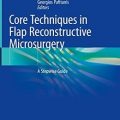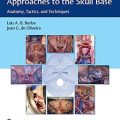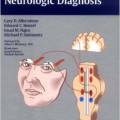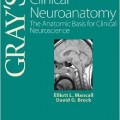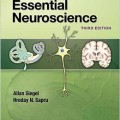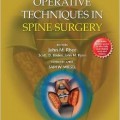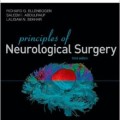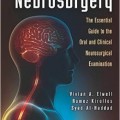دانلود کتاب مبانی تکنیک های جراحی میکروسکوپی و بای پس + ویدئو
Microsurgical Basics and Bypass Techniques, 1ed + Video
A step-by-step manual on fundamental microsurgical bypass techniques young neurosurgeons need to master!
All neurosurgeons must undergo rigorous training in the laboratory and practice bypass techniques repetitively before performing microneurosurgery on a patient. Microsurgical Basics and Bypass Techniques by Evgenii Belykh, Nikolay Martirosyan, M. Yashar S. Kalani, and Peter Nakaji is a comprehensive yet succinct manual on fundamental laboratory techniques rarely included in clinical textbooks. The resource simplifies repetitive microsurgical practice in the laboratory by providing a menu of diverse, progressively challenging exercises.
Step-by-step instructions accompanied by easy-to-understand illustrations, expert commentary, and videos effectively bridge the gap between laboratory practice and operating room performance. The book starts with an opening chapter on four founding principles of microsurgical practice inherited from great thinkers and concludes with a chapter featuring cerebrovascular bypass cases. Chapters 2-8 offer a complete one-week curriculum, with a different lab exercise each day, focused on learning basic microsurgery skills.
Key Features
- Twenty-six videos cover a wide array of topics – from diverse methods for holding instruments and suturing techniques – to end-to-end, end-to-side, and side-to-side anastomosis procedures
- High quality color illustrations clearly demonstrate basic techniques
- Practical laboratory exercises include how to organize a microsurgical laboratory, essential training and skills, basic arterial and deep-field anastomoses, kidney autotransplantation, supermicrosurgery, and aneurysm clipping
- Invaluable tips such as preventing bypass errors and applying laboratory skills to neurosurgical practice
This is an essential microsurgical learning and teaching guide for neurosurgical residents on how to perform basic bypass and anastomoses procedures step by step.
Part of the Fundamental Skills in Neurosurgery Series, Series Editors: Peter Nakaji, Vadim A. Byvaltsev, and Robert F. Spetzler.
Contents
۱ The Philosophy of Microsurgical Practice: Four Founding Principles Inherited from the Great Thinkers
۲ Day 1: The Organization of the Microsurgical Laboratory: Necessary Tools and Equipment
۳ Day 2: Dry-Laboratory Microsurgical Training: Techniques and Manual Skills
۴ Day 3: Wet-Laboratory Microsurgical Training: Basic Principles for Working with Laboratory Animals
۵ Day 4: Exercise Set 1: Basic Arterial Anastomoses
۶ Day 5: Exercise Set 2: Deep Field Anastomoses and Complex Vascular Reconstructions
۷ Day 6: Exercises: Kidney Autotransplantation, Supermicrosurgery, and Aneurysm Clipping
۸ Day 7: Models for Microneurosurgical Training and Schedules for Training
۹ Possible Bypass Errors
۱۰ Translation of Laboratory Skills: Indications for Bypass in Neurosurgery
۱۱ Case Examples of Cerebrovascular Bypass
Video Contents
Video 3.1 The reverse holding technique of holding short microforceps.
Video 3.2 The index push technique of holding short microforceps.
Video 3.3 The traditional technique of holding short microforceps.
Video 3.4 Techniques of holding short straight microscissors.
Video 3.5 The reverse holding technique of holding short straight microscissors.
Video 3.6 The index push technique of holding short straight microscissors.
Video 3.7 The traditional technique of holding short straight microscissors.
Video 3.8 The traditional technique of holding long bayonet microscissors.
Video 3.9 The reverse holding technique (also known as Japanese style) of holding long bayonet microscissors.
Video 3.10 The index push technique of holding long bayonet microscissors.
Video 3.11 The chopsticks technique of holding long bayonet microscissors.
Video 3.12 Technique of picking up a needle from a flat surface.
Video 3.13 Knot-tying method 1: intermittent suture grasping.
Video 3.14 Knot-tying method 2: constant hold of one suture.
Video 3.15 Knot-tying method 3: constant hold of one suture and tightening in single direction.
Video 3.16 Exercise 4: untying a knot.
Video 3.17 Exercise 5: pushing the suture end.
Video 5.1 End-to-end anastomosis on the carotid artery with interrupted suture.
Video 5.2 End-to-side anastomosis on the carotid arteries with continuous suture.
Video 5.3 End-to-side anastomosis for creation of carotid–jugular arteriovenous fistula with interrupted suture.
Video 5.4 Side-to-side anastomosis for creation of femoral arteriovenous fistula with interrupted suture.
Video 6.1 Dissection of the aorta from the vena cava in a deep operative field.
Video 6.2 Suturing the venous interposition graft from the jugular vein into the carotid artery.
Video 7.1 Demonstration of kidney transplantation exercise.
Video 9.1 Demonstration of the high degree of tremor that can be caused by excessive muscle fatigue and tremor reduction with proper hand positioning.
Video 9.2 Errors in suture placement: loose suture placement, suture that displaces the adventitia inside the lumen, and overly tight suture that grabs too much of the vessel wall.
لینک کوتاه : https://bookbaz.ir/?p=163517
نویسنده : Evgenii Belykh , Nikolay L. Martirosyan
ناشر : Thieme; Illustrated edition
سال انتشار : 2020
زبان کتاب : انگلیسی
نوع فایل : MP4 + PDF (کیفیت اصلی)
تعداد صفحات : 148
(ISBN) شابک : 1626235309
قیمت کتاب درآمازون : $90.47
حجم فایل : 900 MB




